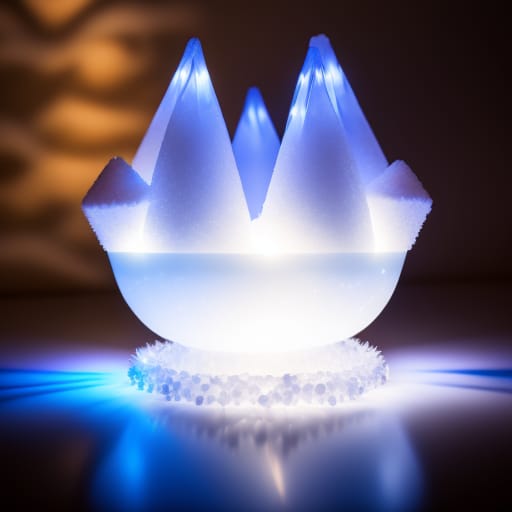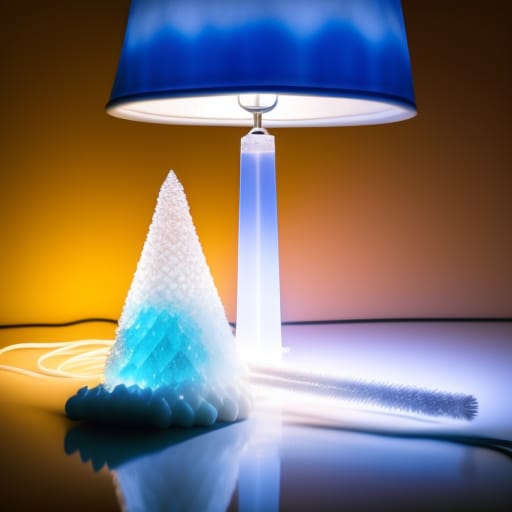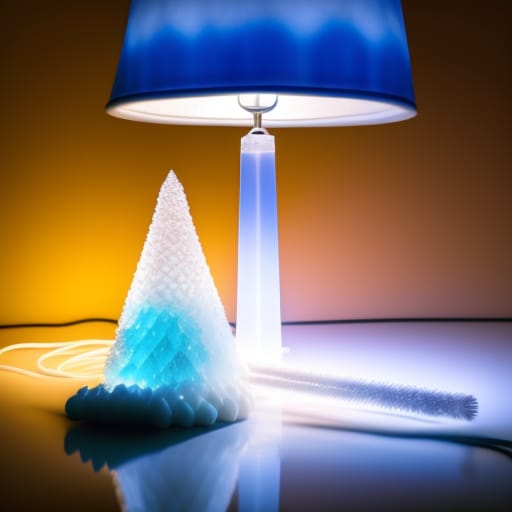Growing crystals is a fascinating science that allows you to create beautiful, structured minerals in your own home. While it takes some specialty equipment and ingredients, crystal growing can be an enjoyable hobby for all ages. In this beginner’s guide, we’ll explore the essential materials you need to get started with basic crystal growing.

Overview of Crystal Growing
Crystal growing, also known as crystallization or recrystallization, is the process of developing a solid crystalline structure from a solution. As the dissolved particles come out of the solution, they align in an organized, repeating pattern that makes up the facets of the crystal.
Crystal growing has several benefits:
- It allows you to create beautiful, structured gems that can be used for decoration, jewelry making, and more.
- It’s an educational science experiment that demonstrates the structured nature of minerals.
- It’s a fun hobby that can engage both kids and adults.
- Crystals can be customized by using different solutions and variables in the growth process.
Basic Requirements for Crystal Growing
While advanced crystal growing setups exist, the basic requirements are:
- A solution of a crystal-forming substance
- A seed crystal or micro-crystalline powder
- A container to hold the solution
- A location with an ideal temperature
- Patience to allow slow crystal formation
The rest of this guide will break down the key materials you need to check these requirement boxes and grow your own crystals!
Choosing Your Crystal-Growing Compound
The first step is selecting what type of crystalline solid you want to grow. Some common options suitable for beginners include:
Table salt (sodium chloride): Table salt is one of the easiest starting crystals. It forms cubic crystals.
Borax (sodium tetraborate): Borax forms platonic, tetrahedral crystals.
Potassium alum: Alum tends to form octahedral or cubic crystals depending on conditions.
Copper sulfate: This forms deep blue prismatic crystals.
Epsom salts (magnesium sulfate): Epsom salt crystals have a needle-like shape.
Urea: This common organic compound produces long, thin crystals.
Other Possible Compounds
- Sodium thiosulfate: Pentagonal bipyramids
- Potassium ferricyanide: Cubic prisms
- Ammonium chloride: Octahedrons
- Potash alum: Octahedrons
- Barium chloride: Hexagonal plates
When choosing which crystal type to grow, consider:
- How easy the compound is to acquire
- Crystal shape and aesthetic
- If dyes can be added to the color
- Safety precautions needed
Selecting Your Seed Crystals
In order to grow large, ordered crystals, you need tiny seed crystals to get the process started. These micro-crystals provide a foundation that additional particles can attach to in an aligned structure.
Ways to acquire seed crystals:
- Start with a premade micro-crystalline powder of your compound. This ensures the smallest, uniform crystals to start with.
- Crush existing larger crystals of your chosen material into a micro-powder.
- Allow spontaneous micro-crystals to form by letting a supersaturated solution sit. Then filter out the crystals.
- Buy ready-made seed crystal kits for convenience.
Ideally, seed crystals should be:
- Tiny, ranging from .1 to .5 mm in size
- Uniform in size and shape for consistency
- Free of defects or irregularities
- Made of the same material you are crystallizing
Choosing Your Solvent
The next step is selecting a suitable solvent – the liquid that will dissolve your solid crystal compound.
Some common options include:
- Water: The most standard solvent. Use distilled water for purity.
- Ethanol or isopropanol: For organic crystal compounds.
- Acetone: Another organic solvent option.
Ideal solvent properties:
- Pure to avoid unwanted contaminants
- Able to fully dissolve the crystal compound
- Chemically inert and non-reactive
- The low boiling point for easy evaporation
- Non-toxic and safe to work with
Calculating Solute Saturation
The solvent should be heated and saturated with your chosen crystal compound. This means the maximum amount of solute is dissolved at a given temperature.
- To calculate saturation:
- Add excess compound to the solvent.
- Heat to just below boiling while stirring.
- Continue adding solute until no more will dissolve.
- Allow solution to cool while saturated before crystal growing.

Choosing Your Crystal Growing Container
| Container Type | Pros | Cons |
|---|---|---|
| Glass jar | Reusable, chemical resistant | Potential for nucleation on glass surface |
| Beaker | Allows full visibility | Can be more expensive |
| Plastic bottle | Inexpensive, disposable | Can absorb chemicals from solution |
| Crystallization dish | Made specifically for crystal growth | Specialized equipment cost |
The container holds the solution while the crystals grow over time. Some options for beginner crystal growers include:
- Glass jars or beakers
- Plastic bottles
- Specialty crystallization dishes
Ideal features of a crystal growth container:
- Chemically inert material
- Transparent for visibility
- Sturdy with a sealable lid
- Large enough to allow crystal formation
- Proper shape to support crystal structure
Creating the Proper Crystal Growing Environment
Growing large, ordered crystals requires a very stable, controlled environment. Some key factors include:
Temperature Control
- Heat initially to dissolve and saturate the solution
- Slowly cool to allow supersaturation
- Maintain constant temperature while crystals form
Vibration Reduction
- Limit environmental vibration or movement
- Isolate crystallization jars on foam pads
Still Air Environment
- Avoid air currents from fans, A/C systems, etc.
- Cover vessels with lid slightly ajar
Proper Lighting
- Indirect or low-light conditions
- Avoid ultraviolet light
With careful control over these variables, you can create an ideal setting for crystal growth.
Advanced Crystal Growing Equipment
While basic crystals can be grown with household materials, advanced growers use specialized equipment:
- Hot plates for temperature control
- Crystallization platform to isolate from vibration
- Fume hoods to control airflow
- Microscopes to monitor crystal formation
- Ultrasonic baths for seed preparation
- Dyes and additives for colored crystals
Investing in this type of equipment can take your crystal growth to the next level.
Patience is Key in Growing Crystals
Image showing crystal formation over time
Finally, successful crystal growth requires patience. It can take hours to days for large crystals to fully form in the solution. Avoid prematurely disturbing or handling the crystals. Allow the process to slowly occur undisturbed.
Tips for Beginner Crystal Growers
To wrap up, here are some key tips to get started:
- Choose an easy compound like salt or alum to start
- Use purified water as a standard solvent
- Ensure properly sized seed crystals
- Carefully calculate the solute saturation
- Control all environmental variables
- Isolate vessels and limit vibration
- Allow crystals sufficient time to fully form
With the right materials and these tips, you’ll be growing beautiful crystals in no time!

Conclusion
While it requires specialized equipment and care, crystal growing is an engaging hobby that lets you produce gorgeous crystalline structures. This guide covered all the essential materials from chemical solutions to containers to environmental controls. The crystal growth process allows you to learn about mineral forms and chemistry hands-on. Starting with basic compounds and homemade setups, you can expand your skills over time. We hope this beginner’s overview gave you all the info you need to get started growing your own crystals!
FAQs About Crystal Growing Materials
What are the best materials for beginners to start crystal growing?
Some of the easiest and most accessible materials for crystal growing beginners include table salt (sodium chloride), borax (sodium tetraborate), alum (potassium aluminum sulfate), and Epsom salts (magnesium sulfate). These form beautiful cubic, tetrahedral, and octahedral crystals with basic household materials.
What type of container is ideal for crystal growth?
The best crystal growing containers are made of inert materials like glass or plastic. Look for a transparent jar or beaker to allow visibility, with a sealable lid and large enough capacity to accommodate crystal formation. Avoid containers with defects that can interfere with the crystal structure.
What temperature is ideal for crystal formation?
Proper temperature control is critical for crystal growth. First, heat the solution to just below boiling to dissolve and saturate the solute. Then allow the solution to slowly cool to create supersaturation and enable crystal formation. Maintain a stable, consistent temperature as the crystals grow.
How can I reduce vibrations for ideal crystal growing conditions?
Limiting environmental vibrations helps grow well-structured crystals. Isolate your crystallization jars by placing them on foam pads or surfaces that absorb vibrations. Avoid growing crystals near loud sounds, moving air currents, or other sources of kinetic energy.
How long does it take for crystals to form?
Be patient! Depending on their type and size, crystals can take hours to multiple days to fully grow in the solution. Avoid prematurely disturbing or handling the crystals. Provide a stable environment and allow the crystal growth process sufficient time to naturally occur.